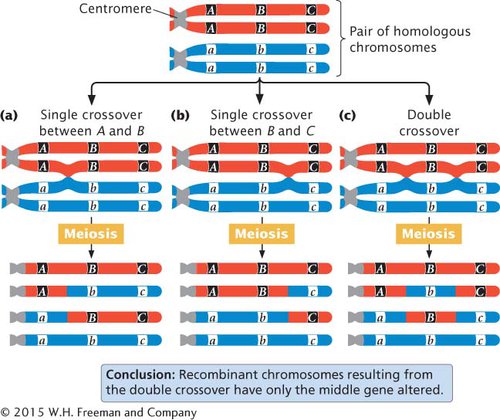5.3 A Three-Point Testcross Can Be Used To Map Three Linked Genes
While genetic maps can be constructed from a series of testcrosses for pairs of genes, this approach is not particularly efficient because numerous two-
Consider what happens when crossing over takes place among three hypothetical linked genes. Figure 5.11 illustrates a pair of homologous chromosomes from an individual that is heterozygous at three loci (Aa Bb Cc). Notice that the genes are in the coupling configuration: all the dominant alleles are on one chromosome (A B C) and all the recessive alleles are on the other chromosome (a b c). Three types of crossover events can take place between these three genes: two types of single crossovers (see Figure 5.11a and b) and a double crossover (see Figure 5.11c). In each type of crossover, two of the resulting chromosomes are recombinants and two are nonrecombinants.

Notice that in the recombinant chromosomes resulting from the double crossover, the outer two alleles are the same as in the nonrecombinants, but the middle allele is different. This result provides us with an important clue about the order of the genes. In progeny that result from a double crossover, only the middle allele should differ from the alleles present in the nonrecombinant progeny.